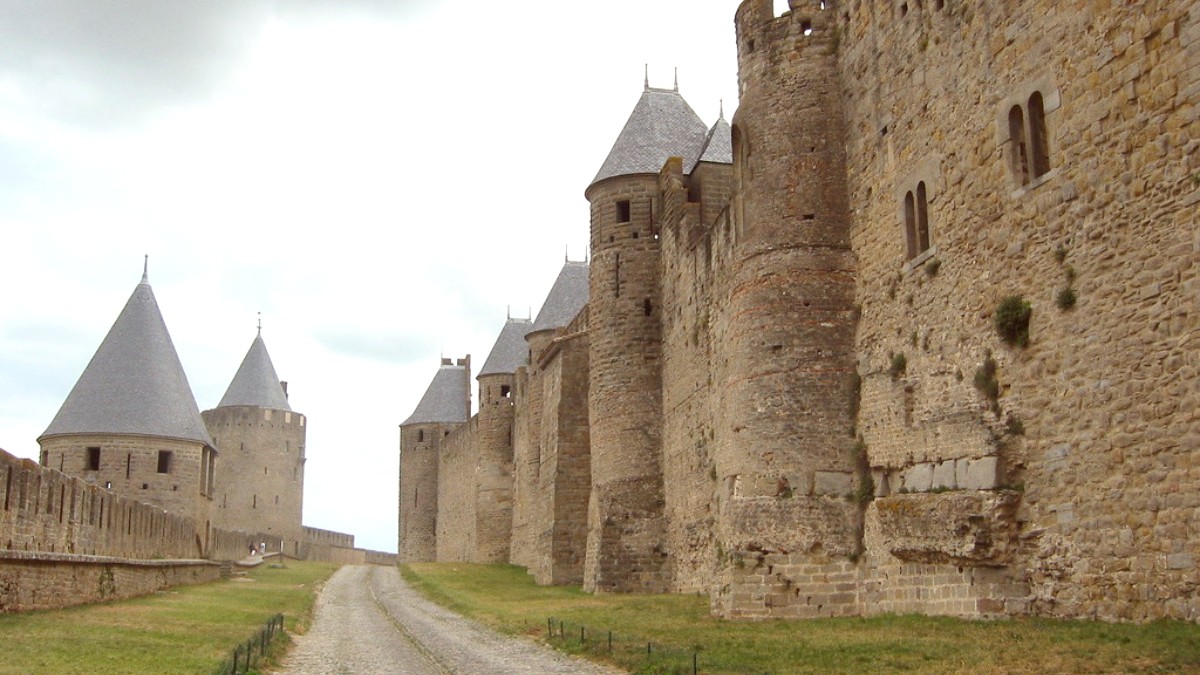
Languedoc Roussillon, France
Beyond the ancient walls, a modern city offers local life, and the Canal du Midi possesses a quiet charm. This guide discusses how to plan a trip to Carcassonne. It assists you in exploring its history, enjoying its food, and discovering the surrounding areas. Expect a visit that connects you with centuries of history and the relaxed pace of Southern France.
Carcassonne’s history extends back to the pre-Roman period. The most prominent feature, La Cité de Carcassonne, began as a Roman settlement. Visigoths fortified the site in the 5th century. This early history established Carcassonne as a place of power.
The 13th century brought an impactful period during the Albigensian Crusade. Carcassonne bid a siege in 1209, leading to its fall. After the crusade, it became part of the French crown. Royal engineers fortified the city further. Over centuries, the Cité's military value lessened, and by the 19th century, it fell into disrepair. Eugène Viollet-le-Duc restored the Cité, saving it from ruin. Its recognition as an UNESCO World Heritage site in 1997 confirms its global importance.
Carcassonne draws global attention for its iconic medieval fortress, La Cité de Carcassonne. This double-walled citadel with 52 towers presents a picture of medieval military architecture. The ramparts feature sweeping views of the surrounding countryside, from vineyards to the distant peaks of the Pyrénées. The Cité contains a castle, a basilica, and a maze of narrow, cobbled streets. These streets house shops, restaurants, and hotels, enabling guests to stay within the historical confines.
The lower city, known as the Ville Basse, presents a contrast to the ancient Cité. This part of Carcassonne features a grid-patterned street layout. Place Carnot, a lively square in the Ville Basse, serves as a hub of local life with its fountain, cafes, and market days. Here, visitors find a wider range of shops, restaurants, and services that cater to daily living. The Ville Basse presents a glimpse into contemporary French life, balancing the historical attraction of the Cité with everyday activities. The walk between the Cité and the Ville Basse takes about 20-30 minutes.
Carcassonne serves as a gateway to the Languedoc wine region, offering opportunities to explore vineyards and taste local wines like Corbières, Minervois, and Fitou.
The city is bisected by the Canal du Midi, a 17th-century engineering marvel and UNESCO World Heritage site, offering tranquil boat trips and cycling paths.
The local economy depends heavily on tourism, driven by the Cité and the Canal du Midi. Wine production and agriculture also play a role.
A visit presents a mix of historical exploration, cultural immersion, and opportunities to enjoy regional produce.
The Cité contains a castle, a basilica, and a maze of narrow, cobbled streets. These streets house shops, restaurants, and hotels, enabling guests to stay within the historical confines.
The fortifications of Carcassonne are among the most impressive in Europe. The Cité consists of a double ring of walls, totaling 3 km (2 miles) in length, with 52 towers. This design created a formidable defense system, making it nearly impregnable during its heyday. Walking the outer and inner ramparts offers different perspectives of the medieval engineering and the panoramic views beyond.
Within the inner walls of the Cité, the Château Comtal (Count's Castle) serves as its own fortress. This castle dates back to the 12th century and includes Romanesque features. Visitors explore its courtyards, watchtowers, and a museum detailing the Cité's history and restoration. The castle offers privileged access to parts of the ramparts, providing further views and historical context.
The Basilica, located within the Cité, presents a mix of Romanesque and Gothic architectural styles. Its stained-glass windows are especially famous, some dating from the 13th century. The Basilica served as Carcassonne's cathedral until the 19th century and remains a significant religious and architectural landmark. Its serene interior offers a quiet retreat from the bustling streets of the Cité.
The Cité’s historical layering provides an unique visitor experience, where every stone tells a story of conquest, faith, and preservation.
Carcassonne itself is compact, with its main attractions easily reached by walking or local bus. For exploring the surrounding Languedoc region, including its vineyards, Cathar castles, and the Canal du Midi, other transportation methods offer more flexibility.
The proximity of the Cité and the Ville Basse means visitors often navigate between the two by foot. This walk presents diverse perspectives of the fortress.
La Cité is entirely pedestrian, ideal for exploring its ancient streets and ramparts on foot.
The RTCA bus network connects the Ville Basse, train station, and La Cité efficiently.
A rented car broadens exploration options to nearby castles and vineyards.
Carcassonne's train station, located in the Ville Basse, is well-connected by regional (TER) and intercity trains. Frequent direct TER trains link to Toulouse (approx. 1 hour), Montpellier (approx. 1.5-2 hours), and Narbonne (approx. 30 minutes). For travel to Paris, a transfer at Toulouse or Montpellier for a TGV (high-speed train) is customary, taking 5-7 hours total. FlixBus and BlaBlaCar Bus also operate, offering budget-friendly intercity services to major French cities. The main bus station stands next to the train station.